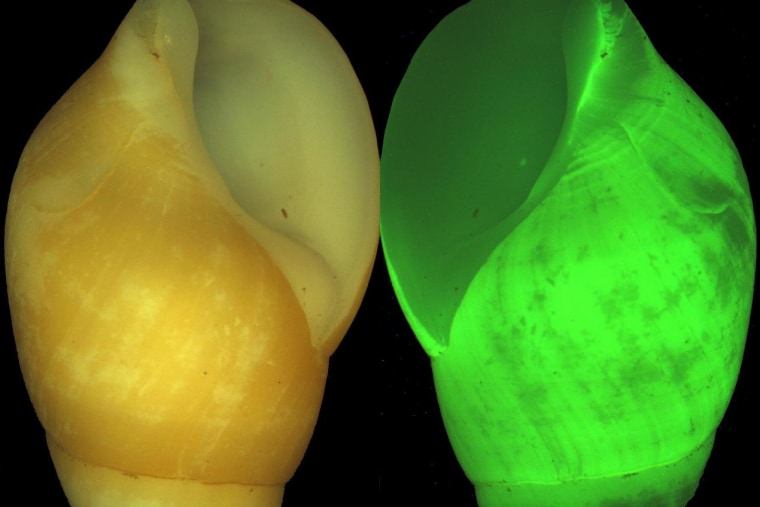A tiny marine snail that looks as if it could be at home dangling from a Christmas tree emits its green glow to scare off would be predators, according to a new study.
The snail, Hinea brasiliana, is a type of clusterwink snail that is typically found bunched up in groups along rocky shorelines. The green glow results from a phenomenon known as bioluminescence — that is, light made by living animals.
Researchers knew the snail had this light-producing capability, but discovered that rather than emitting a focused beam of light, the animal uses its shell to scatter and spread light in all directions.
The effect likely makes the snail appear larger than it really is to scare off predators: In a laboratory experiment, the snail lit up when confronted by crabs and swimming shrimp.
The snails have opaque, yellowish shells that would seem to stifle light transmission. But the researchers found when the snail produces bioluminescence from its body, the shell acts as a mechanism to specifically disperse that color of light.
Study co-author Dimitri Deheyn, a marine biologist at the Scripps Institution of Oceanography at the University of California at San Diego, said such biological adaptations are of interest in the fields of optics and bioengineering. "Our next focus is to understand what makes the shell have this capacity, and that could be important for building materials with better optical performance," he said in a news release.
Nerida Wilson, now at the Australia Museum in Sydney, joined Deheyn on the research. The findings are published in the Dec. 15 online version of Proceedings of the Royal Society B (Biological Sciences).
More stories on bioluminescence
- Bioluminescence lights up the ocean
- New worm species found: the 'green bomber'
- Hungry bats prompt firefly flashes
- Fishlike creature glows in the dark
- Jellyfish uses flashing red lights to lure prey
- Some sharks can become invisible, study says
- Cloned cats that glow?!
- The 2010 Weird Science Awards
Tip o' the Log to Discovery News.
John Roach is a contributing writer for msnbc.com. Connect with the Cosmic Log community by hitting the "like" button on the Cosmic Log Facebook page or following msnbc.com's science editor, Alan Boyle, on Twitter (@b0yle).
